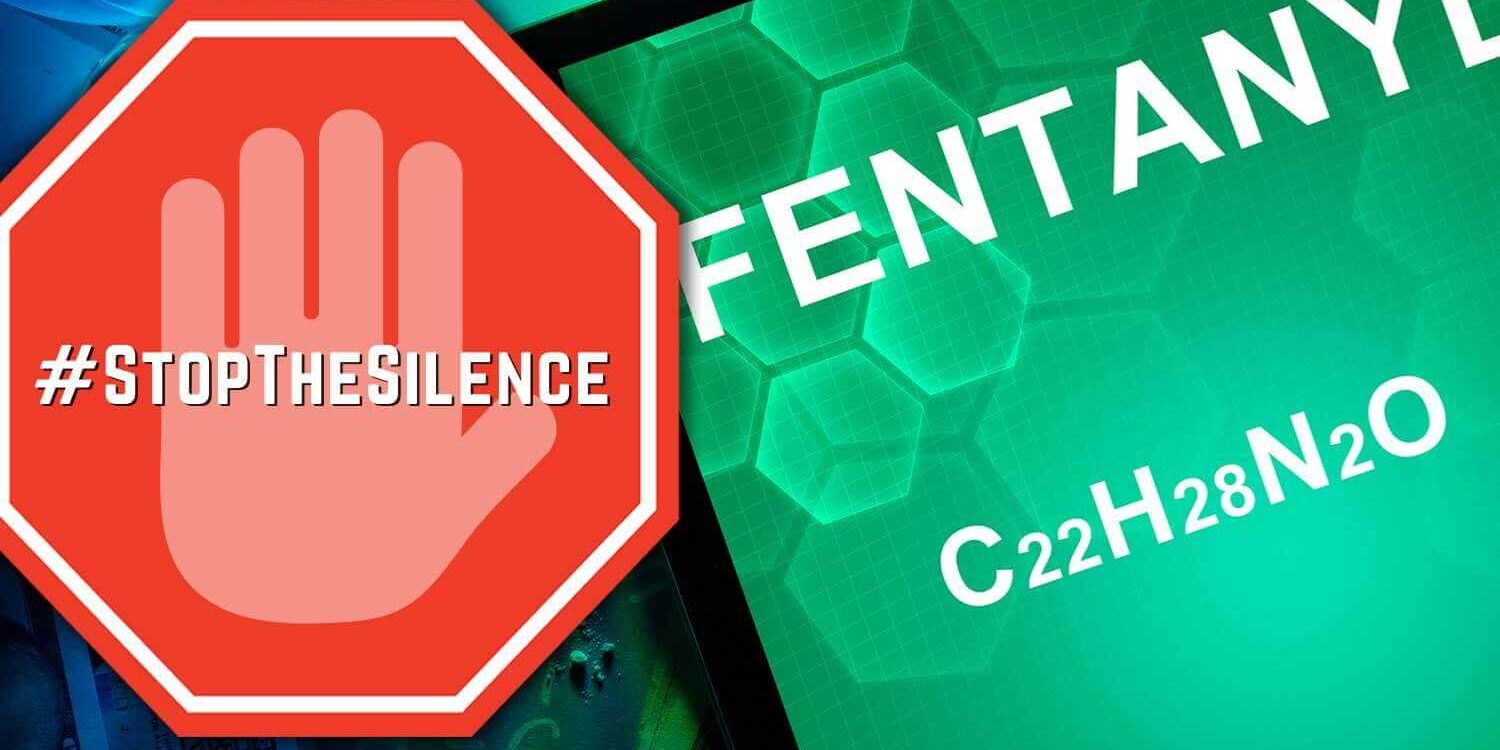Another Record High Overdose Death Data Fueled by Fentanyl
Last year was a record-setting year for drug overdoses in the United States. According to the Centers for Disease Control and Prevention, more than 107,000 Americans died from drug overdoses in 2021. This is a 15% increase from the previous record, set in 2020. The CDC reviews death certificates and then makes an estimate to account for delayed and incomplete reporting. The provisional 2021 total translates to roughly one U.S. overdose death every 5 minutes. The escalating overdose epidemic is a tragic reality in our nation, and it is clear that we need to do more to address this issue and protect our citizens.
The DEA and other law enforcement officials across the county are warning the public to please be aware of the sharp increase in fatal overdoses related to the powerful deadly drug fentanyl. In just the last year, there has been a dramatic increase in overdoses and deaths related to fentanyl. In some areas, the number of overdoses has quadrupled. And tragically, many of these victims are young people. Fentanyl continues to cross our borders and poison our children at horrific rates. We must do everything we can to raise awareness of this dangerous drug and prevent more lives from being lost.
We must work together to provide resources and support for those struggling with addiction, and mental health. Only by working together can we hope to reduce the heartbreaking loss of life due to drug overdoses.
New CDC Report Highlights Troubling Trend in Opioid Overdose
For over 26 years, people from all over the world have chosen Waismann Method as their opioid detox provider.
We know the challenges you face and the importance of creating a unique and personal experience for you right from the start.Call for Detox Options 1-800-423-2482
Data Source: VSRR Provisional Drug Overdose Death Counts, November 2021 by Vital Statistics Gallery
Are Americans Being Murdered?
Buyer beware! Americans are dying at unfathomable rates from a drug they aren’t even aware they are taking. Fentanyl and its analogues are killing people at historic rates, with no end in sight. You may wonder how someone can be completely unaware they are taking a lethal drug. It happens because greedy and unscrupulous drug dealers maximize their profits by covertly lacing drugs like heroin, cocaine, benzodiazepines, and methamphetamines with fentanyl and neglecting to warn the buyer. Furthermore, those who use non-opioid drugs, such as methamphetamine or cocaine users, do not have an opioid tolerance. When exposed to these secretly fentanyl-laced drugs, they are at much higher risk for an opioid overdose.
Due to the nature of data collection and analysis, CDC figures on drug epidemics and other public health problems often lag months or years behind the present day. Now, with families across the United States looking for answers, the CDC released a report with the most up-to-date information about opioid overdose rates across the country.
According to the U.S. Drug Enforcement Administration (DEA) warning in September, illegal drugs are often made to look like prescription pills, available online and sold through social media. A meager dose of fentanyl can be deadly, and they’re often cut in with counterfeit Oxycodone, Percocet, and other drugs.
Officials report that this sharp increase in lethal overdoses was driven by the deadly prevalence of fentanyl, pandemic-related stressors, and problems in accessing care. Although the opioid crisis has long been viewed as a problem predominantly in rural America, large metropolitan regions showed the most substantial increases in overdoses.
Sharp Rise in Overdose Deaths Across the Nation
It is abundantly clear that the fentanyl crisis ravaging North America did not appear out of thin air. Fentanyl, after all, is a potent and dangerous drug, and it is only recently that it has become widely available.
So how did this happen? How did fentanyl become such a pervasive problem? While there are many factors that have contributed to the rise of fentanyl, one of the most important culprits is the fact that fentanyl is crossing our borders rapidly and contaminating the illicit drug market. This includes both street drugs and illicitly obtained prescription drugs.
The lack of border patrol provides dealers an opportunity to bring fentanyl in and poison the illicit supply. As a result, people who would never knowingly take fentanyl are unwittingly becoming addicted to it. This is just one of the many ways in which fentanyl has become a pervasive problem in North America.
Unfortunately, the American Medical Association reports show that drug-related overdose death rates and the fentanyl epidemic continue to worsen.
What we’re seeing are the effects of these patterns of crisis and the appearance of more dangerous drugs at much lower prices,” Dr. Nora Volkow, director of the National Institute on Drug Abuse, told CNN. “In a crisis of this magnitude, those already taking drugs may take higher amounts, and those in recovery may relapse. It’s a phenomenon we’ve seen and perhaps could have predicted.”
But the rise of fentanyl, a more potent and faster-acting drug than natural opiates, has made those effects even more deadly, Dr. Volkow said.“
The Effects of an Opioid Overdose on Families
The latest figures from the CDC highlight the slow response from public health officials to impact the opioid crisis meaningfully.
“The main driving force on the surge in overdoses is the increase of fentanyl on the drug supply,” said C. Waismann, a registered addiction specialist and substance use disorder counselor. “Most street drugs are laced with Fentanyl. This includes heroin, cocaine, methamphetamine to Xanax.”
Unfortunately, the report does not highlight how the public health response to the opioid crisis continues to fail. The rise in the sharp surge of overdoses has affected every region around the country. The opioid crisis is not an issue happening to a single area or type of person. Instead, it is a tragic crisis involving directly or indirectly every citizen in the country, a problem that will affect generations to come. Families must know that anyone, whether young or older, rich or poor, well-educated or less educated, and of any race or ethnic group, may suffer from opioid addiction.
Overdose Crisis Response
The marked upswing of opioid overdoses in this country has taxed emergency resources, already overwhelmed by COVID patients, especially in the regions hit hardest by the crisis. It encourages the broader availability of Naloxone, an opioid antagonist that immediately reverses an overdose because it has saved many lives.
“Unfortunately, the lack of effective treatment resources leads to a ‘revolving door’ problem in which a person overdoses, is taken to the emergency room, receives the care necessary to stabilize his or her medical condition and is discharged to free up space for other acutely ill patients.” Mrs. Waismann comments.
“Sadly, healthcare professionals are not being given the tools and resources to help these patients effectively. Once discharged, opioid users return to their former habits and look for drugs to feel better and numb their emotional pain. Although Naloxone may have saved their lives, it also rapidly induces withdrawal which may lower their tolerance. Premature discharge places the most vulnerable individuals at a higher chance for a second overdose, compounding their risk of death,” she continues.
E.R. Overdose Response
To adequately address the opioid crisis, emergency departments must change the way they operate. Rather than stabilizing the patient to prepare for a swift discharge, E.R. doctors could admit patients into a unit where they have the chance to receive proper treatment. Once at this unit, a team of psychiatrists, therapists, and social workers would provide a comprehensive assessment. Also, a complete medical detox in a safe and supportive environment followed by mental health care.
“In addition to providing a solution instead of a temporary band-aid, this treatment approach can also save money. Rather than a costly revolving door of individuals overdosing multiple times, requiring multiple hospital visits. Affected individuals should get the care they need. They should receive medical detoxification and mental health care, so they can focus on maintaining sobriety.”
— C. Waismann
For Those Struggling with Opioid Addiction
One thing is for sure — upholding the status quo no longer works. People are struggling with mental health issues and opioid addiction. Therefore, we as a society continue to suffer from inadequate public safety and health resources. Resources presently offered in emergency departments, and other public health facilities lack quality, accessibility, and effectiveness.
This is an incredibly dark time in our society. Unfortunately, the media is choosing to turn a blind eye to a crisis. A tragic situation that is taking a toll in this country with dreadful consequences. We must find a way to break this deadly cycle by providing genuine life-saving treatments and better border patrol. Additionally, fentanyl continues to be distributed in every corner of our society at unimaginable rates while our citizens are dying. We need to do more, and we need to do much better in protecting our people.
Waismann Method Opioid Treatment and Rapid Detox Specialists have been speaking up and fighting for over two decades for those suffering from opioid use disorder and mental health illnesses. Although the center is at the forefront of providing advanced treatments for opioid detoxification, that is not all we do. Our mission is much broader. We want to change and better our citizens’ health care quality, especially those struggling with addiction. Opioid use disorder is a severe medical condition, and simply telling someone to stop using or get over it won’t help the situation. This type of mindset lacks compassion and understanding of the condition.
There are no perfect answers for supporting a friend or loved one struggling with addiction. Although, there is much more that we, as a society, can do to save lives. Let’s make every life lost to fentanyl overdose count.
Sources:
- US overdose deaths hit a record 107,000 last year,
- Historic High Overdose Deaths
- DEA: Law Enforcement Warns of Increase in Fentanyl Overdoses
- AMA: Nation’s Drug-Related Overdose and Death Epidemic Continues to Worsen
Reviewed by Clare Waismann, Registered Addiction Specialist (M-RAS), Substance Use Disorder Certified Counselor (SUDCC II), founder of Waismann Method® Advanced Treatment for Opiate Dependence and Domus Retreat®. Clare Waismann is an authority and expert on opioid dependence, opioid use disorder, substance dependence, detoxification treatments, detox recovery, and other topics covered on RapidDetox.com.







